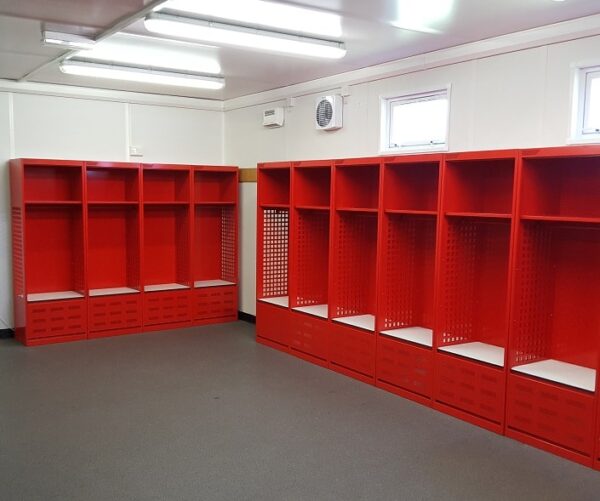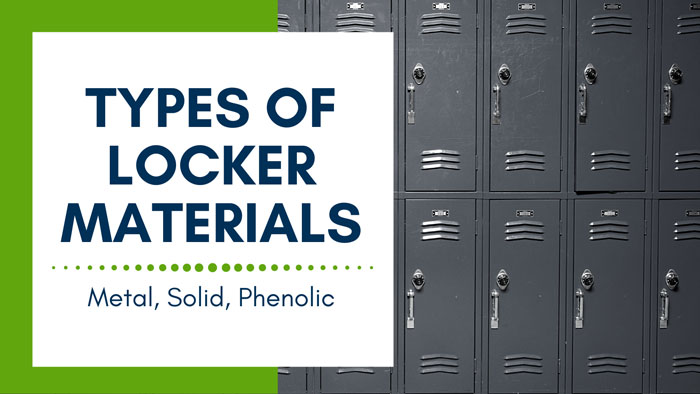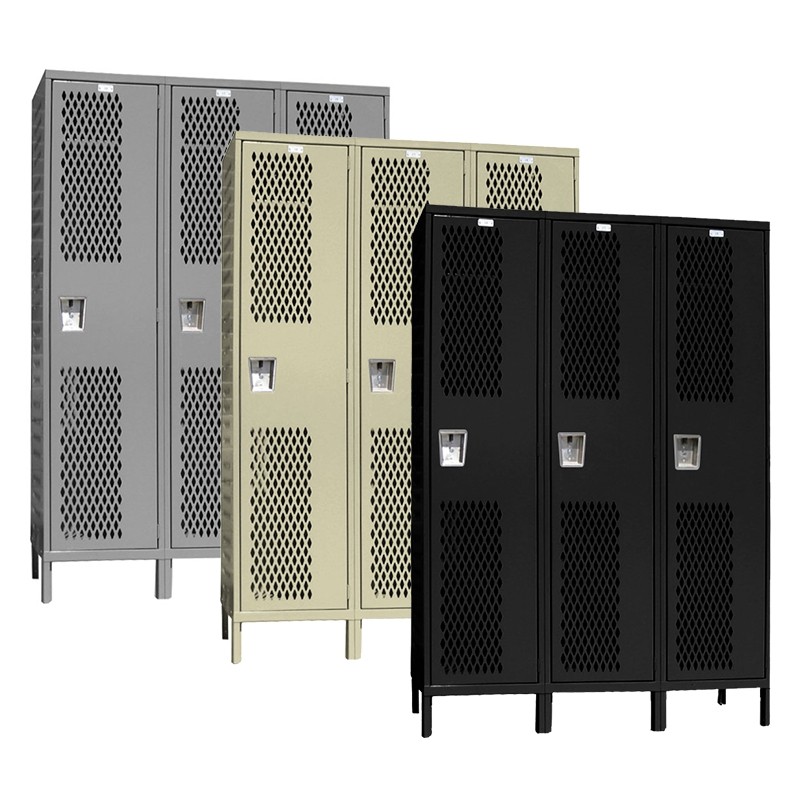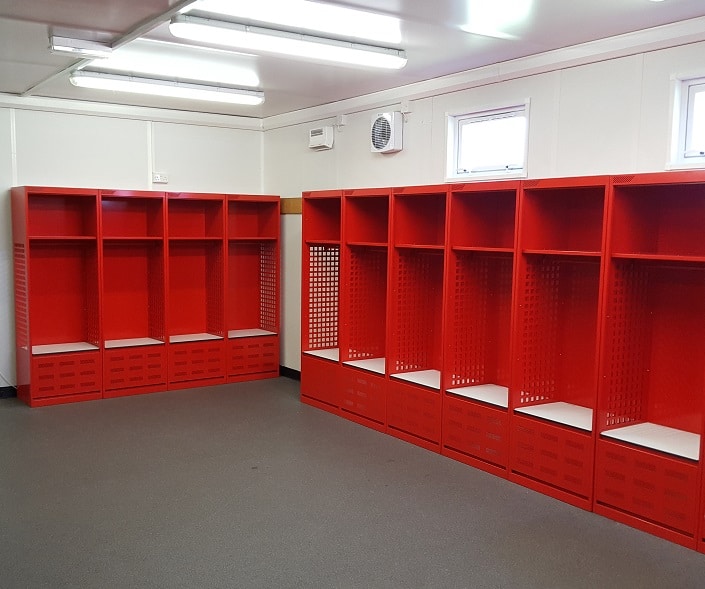Football stadium lockers, particularly those found in professional and collegiate locker rooms, have unique characteristics to accommodate the needs of football players. These lockers are specifically designed for storing equipment, uniforms, and personal belongings, while also sometimes serving as a place for players to rest and mentally prepare for the game. Here are some of the main features and considerations associated with football stadium lockers:
- Size: Football stadium lockers are generally larger than standard lockers. Football equipment, like helmets, shoulder pads, and cleats, takes up a lot of space. The lockers need to be spacious enough to accommodate all these items comfortably.
- Ventilation: Proper ventilation is essential for these lockers. Football equipment can become sweaty and damp after practices or games, and proper airflow can help to prevent the growth of mold or bacteria and eliminate unpleasant odors.
- Material: Many high-end football lockers are made of wood or a combination of wood and metal. This gives them a luxurious appearance while also being durable. Metal, particularly heavy-duty steel, is also common due to its durability and ease of maintenance.
- Hooks & Rods: Inside the locker, there are usually multiple hooks for hanging jerseys, pants, and other equipment. Some lockers also include a horizontal rod for hangers.
- Seats or Benches: Many football lockers come with a built-in bench or seat. Players can sit while changing, or use it to set down items temporarily.
- Security: Lockers in a football stadium may come with combination locks, padlocks, or digital security systems to protect players’ valuables.
- Customization: High-end locker rooms, especially in professional and major collegiate settings, might have customized lockers with individual players’ names, numbers, and even built-in tech like charging stations or personal screens.
- Design & Branding: The aesthetic appeal of locker rooms has become more important, especially for top-tier teams. A well-designed locker room can be a point of pride for a team and can also play a role in recruiting for college teams. Team colors, logos, and other branding elements are often incorporated into the locker design.
- Accessibility: It’s also important to consider accessibility standards to ensure that all players, including those with disabilities, can use the facilities.
- Additional Storage: Some football lockers feature additional storage components such as drawers or cubbies. This can be useful for storing personal items or smaller equipment pieces.
- The type of football stadium lockers used will vary depending on the size and budget of the stadium. Some stadiums may have individual lockers for each player, while others may have communal lockers that are shared by multiple players.The lockers are usually locked with combination locks to prevent unauthorized access. Players are given a combination to their locker when they arrive at the stadium.Here are some of the features of football stadium lockers:
- They are made of durable materials, such as metal or plastic, to withstand the wear and tear of everyday use.
- They are large enough to store a player’s helmet, pads, and uniform.
- They may have shelves or hooks for storing other belongings.
- They are usually locked with combination locks to prevent unauthorized access.
In summary, football stadium lockers are specifically tailored to meet the demands of football players and the equipment they use. When designing or choosing lockers for a football stadium, it’s essential to consider functionality, durability, aesthetics, and the overall player experience.






